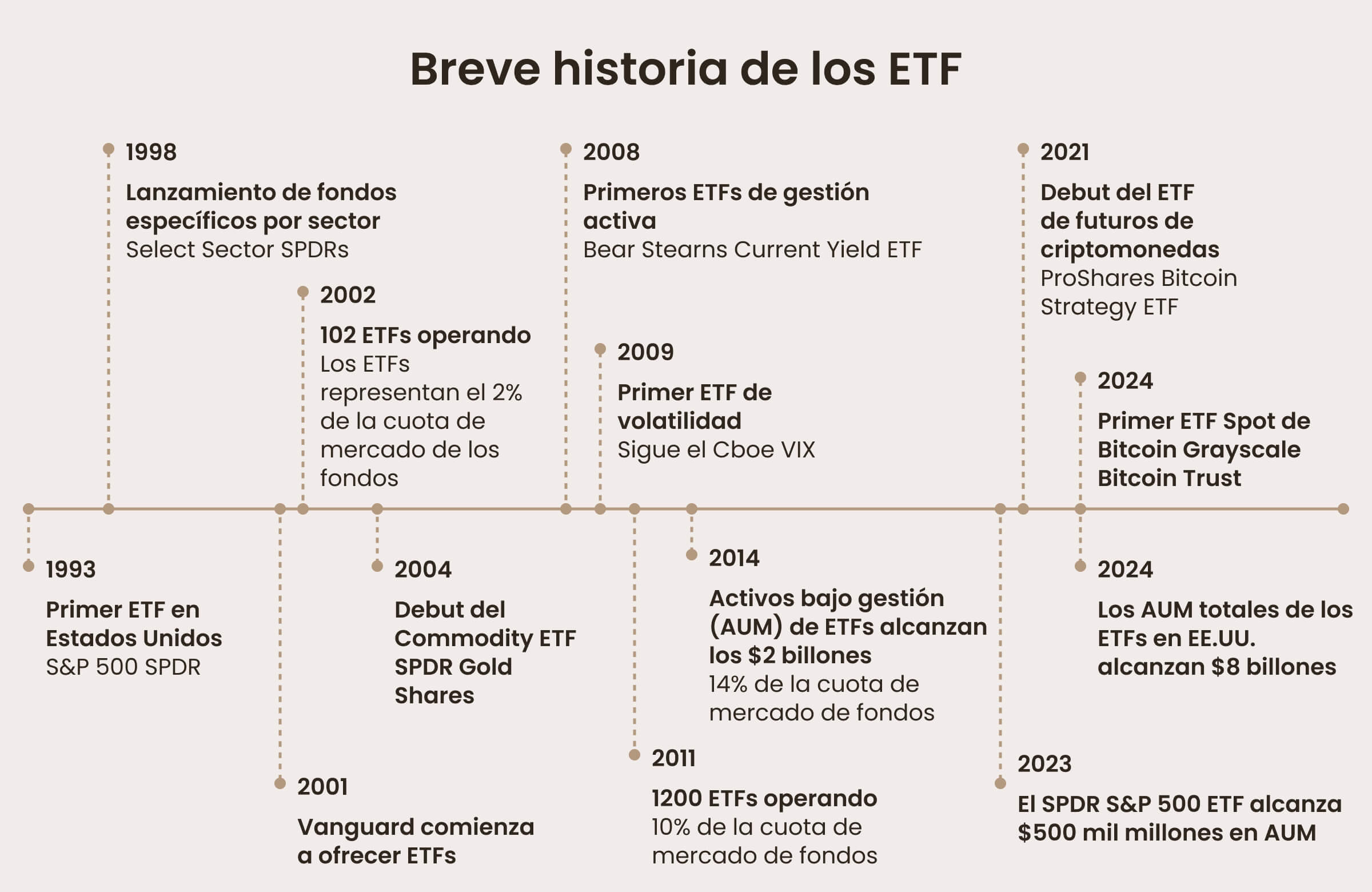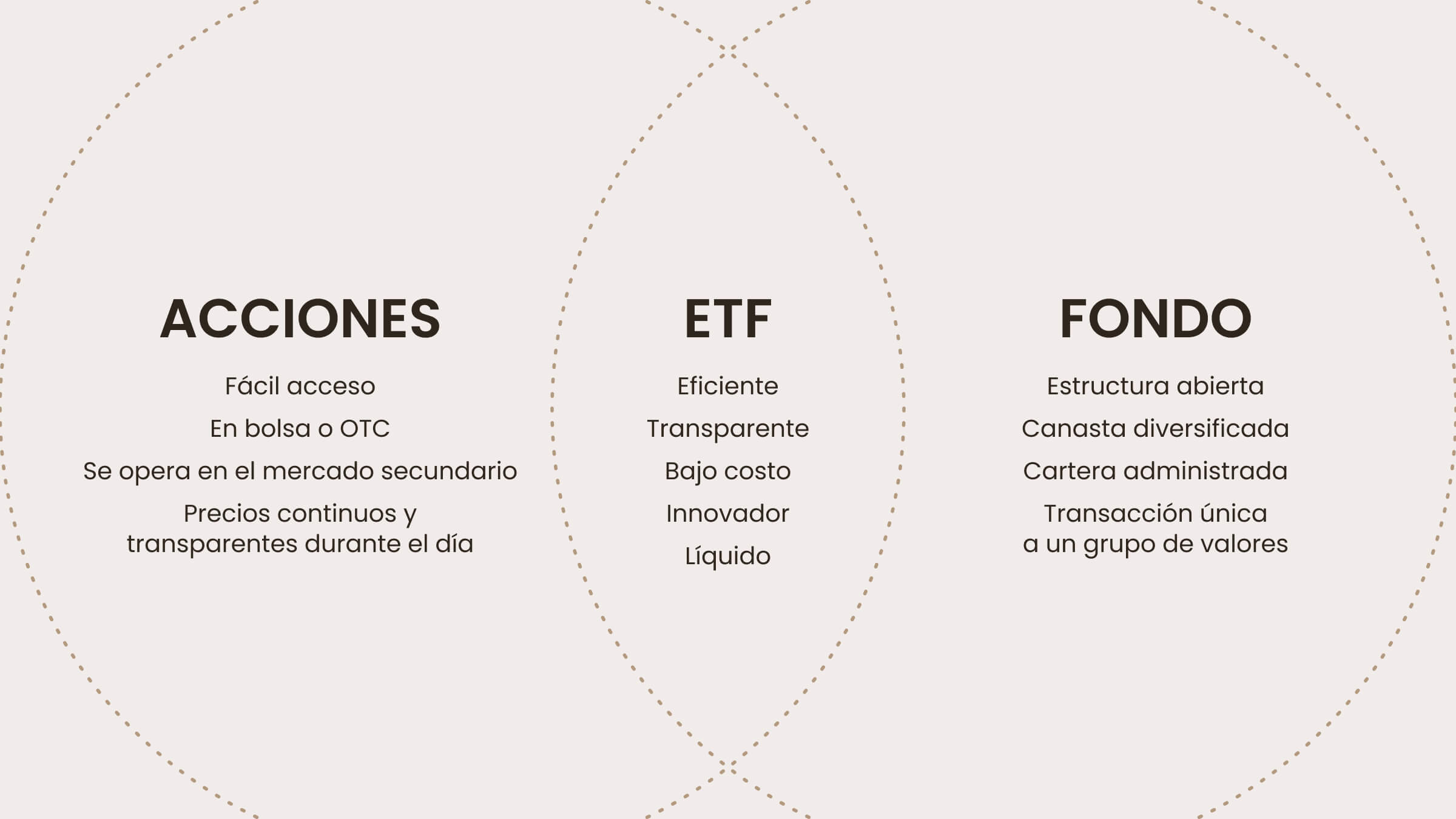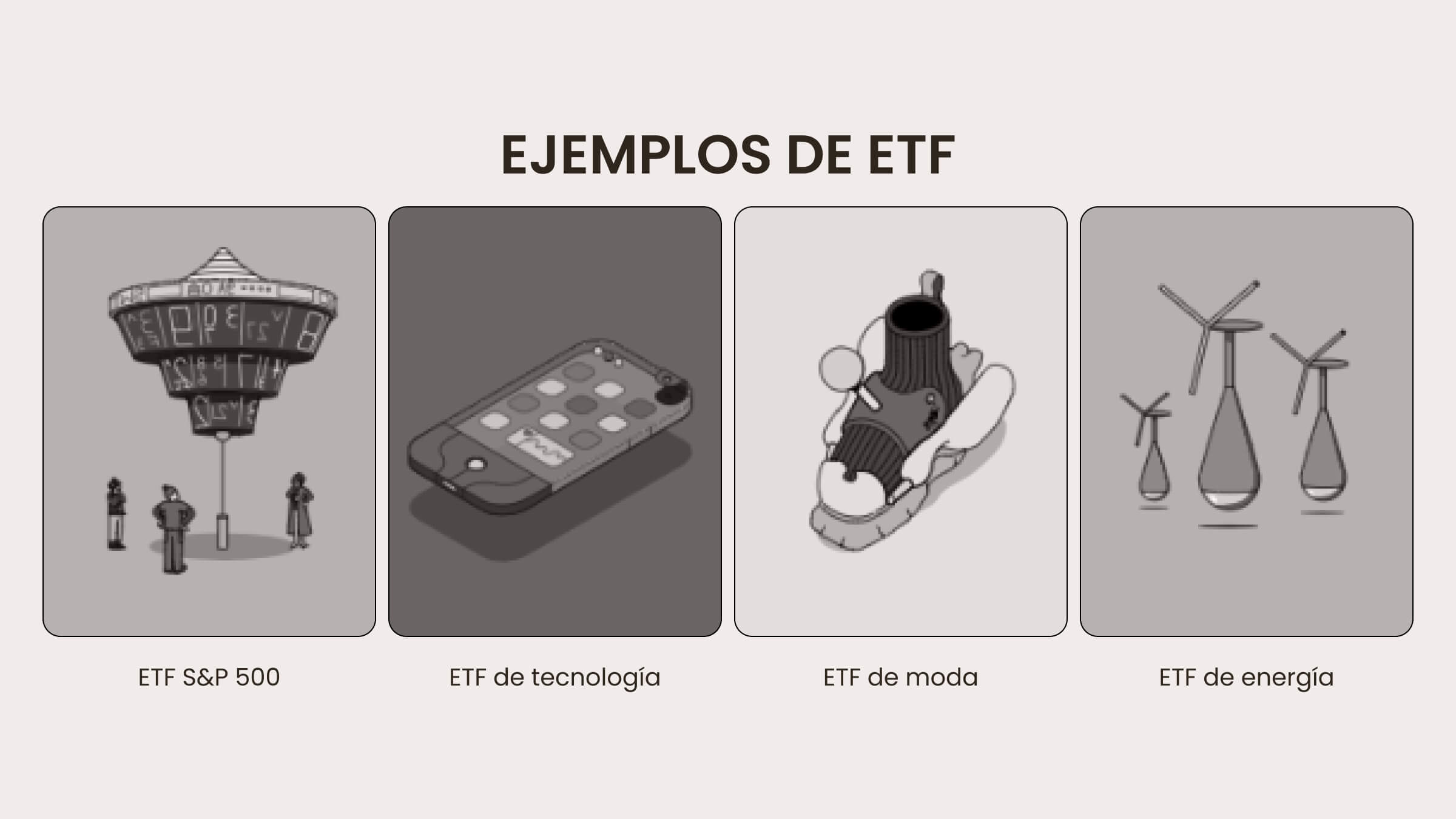Historia de los ETF

Desde su creación a principios de la década de 1990, los ETF han transformado la forma en que vemos la inversión. Hoy en día, son uno de los productos financieros más populares, diversos y rentables para inversores de todo el mundo. Pero ¿cómo surgieron los ETF? Echemos un vistazo a su historia.
El concepto de ETF surgió a finales de la década de 1980 cuando Nathan Most, un ejecutivo de la Bolsa de Valores de Estados Unidos (AMEX), creó un producto que combinaba los beneficios de la inversión en índices con la flexibilidad del trading en acciones. Su objetivo era permitir a los inversores comprar y vender índices enteros con la misma facilidad que se compran y venden acciones individuales. Sin embargo, los primeros esfuerzos encontraron resistencia. El fundador de Vanguard, John Bogle, por ejemplo, dudaba de la conveniencia de los fondos indexados para el trading intradía.
Sin embargo, el primer ETF se lanzó en Canadá en 1990. El fondo TIP 35 siguió el índice de la Bolsa de Valores de Toronto, y esto allanó el camino para el auge mundial de los ETF.
En los Estados Unidos, el primer ETF apareció en 1993. Fue el ETF SPDR S&P 500 (SPY), desarrollado por State Street Global Advisors. SPY fue diseñado para seguir el índice S&P 500 y se convirtió en un éxito instantáneo. Hasta el día de hoy, SPY sigue siendo uno de los ETF más operados del mundo.
La década de 1990 y principios de la década del 2000 llegaron con más innovación para los ETF.
Los ETF de renta fija se introdujeron en 2002, lo que permitió a los inversores acceder fácilmente a los mercados de bonos. Dos años después llegaron los ETF de commodities, como el SPDR Gold Trust (GLD), que agregó activos físicos como el oro.
A lo largo de las décadas, los ETF crecieron exponencialmente. Para 2021, los activos globales de ETF superaron los 8 billones de dólares, con casi 7000 fondos disponibles. Hoy en día, los inversores pueden obtener cualquier ETF de cualquier clase de activos, desde acciones y bonos hasta bienes raíces y commodities.
Cómo funcionan los ETF
Cuando inviertes en un ETF, posees participaciones del fondo, pero no los activos subyacentes directamente. Esto significa que, si inviertes en un ETF que sigue un índice bursátil como el S&P 500, no posees las acciones individuales dentro del índice. Sin embargo, aún puedes recibir dividendos de las acciones incluidas en el índice.
Si inviertes en el ETF Consumer Staples de Vanguard (VDC), inviertes de forma simultánea en 104 empresas que forman parte del índice MSCI US Investable Market Consumer Staples 25/50. Este ETF tiene acciones en compañías conocidas, como Procter & Gamble, Costco, Coca-Cola, Walmart y PepsiCo. Si inviertes 1 USD en VDC, posees 1 USD en acciones que representan a las 104 empresas del fondo.
También es importante recordar que, aunque los ETF tienen como objetivo igualar el rendimiento de su activo subyacente, su precio al operarlo puede diferir ligeramente del valor real del activo a causa de la actividad del mercado. Además, los rendimientos de los ETF a largo plazo pueden variar del rendimiento de los activos subyacentes debido a los gastos del fondo.
Los ETF normalmente tienen tarifas más bajas que otros tipos de fondos y, a menudo, se consideran rentables. Sin embargo, el nivel de riesgo varía según el tipo de ETF.
Características principales:
El precio de mercado de los ETF se determina a lo largo del día de trading, a diferencia del precio de los fondos mutuos, que se fija una vez al día después del cierre de los mercados.
La mayoría de los ETF en EE.UU. tienen una estructura abierta, lo que significa que no hay límite en el número de inversores que pueden participar.
Los ETF están regulados. Deben estar registrados en la Comisión de Bolsa y Valores (SEC) y, a menudo, operan bajo la Ley de Sociedades de Inversión de 1940.
Los ETF funcionan de la siguiente manera:
El primer paso es la selección de activos, cuando el proveedor de ETF elige una canasta de activos, como las empresas de consumo básico en el ejemplo de VDC, y las organiza en un fondo con un símbolo de cotización único.
Luego, los inversores compran participaciones en el ETF, que representan una parte de los activos totales del fondo.
Finalmente, las participaciones del ETF se operan en las bolsas de valores, del mismo modo que las acciones. Esto hace que sean fáciles de comprar o vender durante el día de trading.


